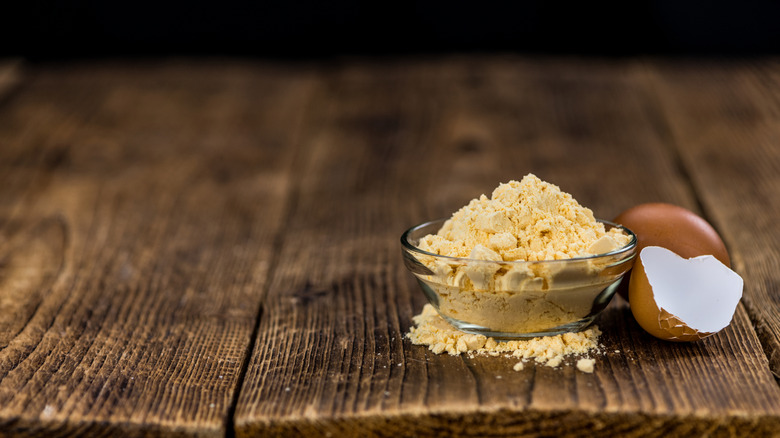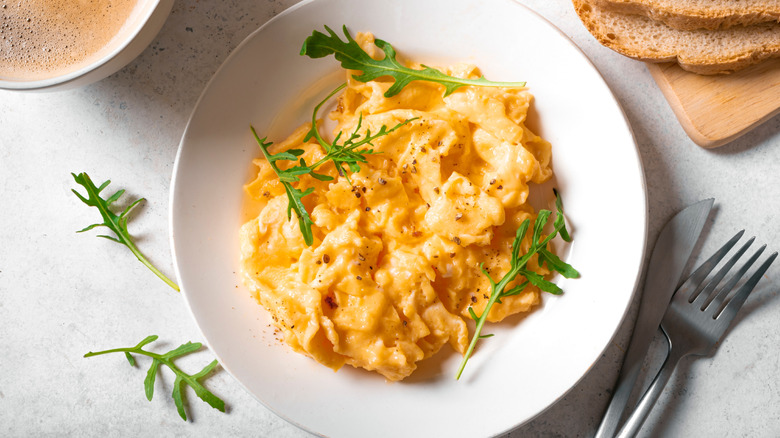How To Use Powdered Eggs When You're In A Pinch
We may receive a commission on purchases made from links.
Powdered eggs are a convenient alternative to fresh eggs, whether you're worried about rising egg prices in the United States, you need shelf-stable eggs for travel or camping, or you simply enjoy the ease of cooking with dried egg. For your baking and cooking needs, all you need to do is reconstitute the egg powder into liquid egg by adding water — the package instructions will tell you how much to add. Once you've got your rehydrated eggs, you can treat them like regular eggs.
Powdered eggs are made from whole eggs that have been dehydrated and processed into a powder. Unopened powdered eggs stored in a cool, dark, dry place can last for several years, making them a prime choice for the restaurant industry, disaster preparedness, and the military. However, they can also be a useful pantry staple for any home cook who has run out of fresh eggs.
The use of dried egg powder as we know it originated in the first half of the 20th century, becoming particularly prevalent during World War II due to its shelf-stability and nutritional quality. While a small amount of nutrients are removed during dehydration, most of the nutrition in the eggs (including their protein) remains in their powdered form. Besides their convenience and nutritional content, you can generally substitute fresh eggs with dehydrated eggs in any recipe that calls for them. However, there are some tips to follow to make sure your dish turns out tasty and with the proper texture.
Tips for using powdered eggs
Powdered eggs can contain only the yolk, just the whites, or the whole egg. Which version you should buy depends on your preferences and what you'll be making. For example, just like fresh egg whites, powdered egg whites can be used in baking to make meringue or egg white frittatas, while egg yolk powder can be used to make custard or crème brûlée. Whole egg powder is quite versatile and can be used in cooking or baking any dish that requires eggs.
To make tasty scrambled eggs, omelets, cakes, cookies, or any dish involving eggs, thoroughly whisk together water and powdered egg (refer to the packaging for the correct ratio) until smooth. Room temperature water works best for creating a well-blended, uniform texture. Don't fret if there are a few small clumps remaining after whisking. Simply allow the mixture to sit for a few minutes and they should soften enough to cook properly. Or, for a super smooth blend, consider using an immersion blender like the Cuisinart Hand Blender or the Mueller Multi-Stick Immersion Blender on a low setting to effectively get rid of any clumps.
Once the powdered eggs are reconstituted, you've got a wide variety of recipes at your disposal. For a quick and tasty breakfast made with powdered eggs, follow Tom Colicchio's pro tip for extra creamy scrambled eggs, or add mayonnaise, Alton Brown's key ingredient for delicious scrambled eggs. There's no end to the possibilities.

